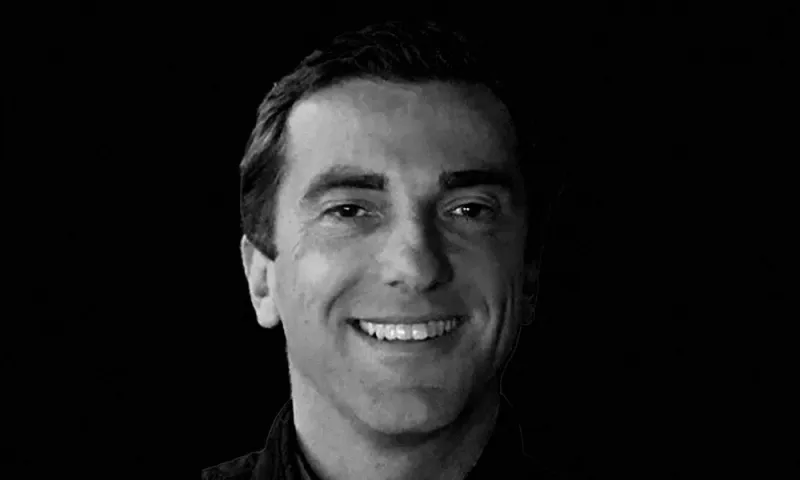When Mason Morfit interviewed for the first investment analyst spot at hedge fund firm ValueAct Capital in 2000, shortly after its launch, the then 24-year-old was not too concerned about his lack of business school degree. “The firm had no assets under management, so it was a good fit,” he quipped in a June 24, 2019 speech at the Stanford Directors’ College.
It sure was.
Morfit has been with the firm ever since — and now fully heads up ValueAct after founder Jeff Ubben retired last June. It is shaping up to be a successful transition from the founder, a rarity in the hedge fund world.
ValueAct currently manages more than $13 billion in assets after posting a 12.5 percent gain in 2020. This is despite dropping more than 25 percent in the first quarter amid the market’s pandemic-induced sell off, according to several firm documents obtained by Institutional Investor.
The fund was up more than 14 percent this year through mid-March, according to an investor.
Last year’s performance turnaround came amid a major transition period for ValueAct, marked by a flurry of organizational and structural changes that were set in motion at the end of 2019.
Morfit was promoted to chief executive and Brandon Boze to president, while Ubben transitioned to chairman before ultimately leaving the firm altogether several months later.
The changes “set us up to be much more decisive,” the firm said in its fourth quarter letter, which detailed other executive and administrative changes that were designed to create “much clearer lines of responsibility for the firm’s management committee.”
Ubben had been the public face of ValueAct since its inception in 2000. One of the earliest activist hedge funds, the firm ultimately became one of the most successful, at one point managing as much as $20 billion.
Along the way, ValueAct’s team has held more than 50 public company board seats and played a significant role in the transformation of companies including Microsoft, Adobe, 21st Century Fox, CBRE Group, Olympus, and Motorola Solutions.
Last year’s leadership transition was set in motion as far back as 2007, when Morfit was added to the management committee and was tapped to be Ubben’s official successor. He was named president in 2013 and promoted to chief investment officer and portfolio manager of ValueAct Master Fund in 2017.
Boze, who has been with the firm for 16 years, joined the management committee in 2018.
[II Deep Dive: ValueAct’s Founder Steps Down From CEO Role]
After ValueAct plummeted by more than 25 percent in the first quarter of last year, Morfit and his team got busy.
The firm told investors in the fourth quarter letter that it bought about $2 billion in stocks and sold about $2 billion.
Most significantly, it liquidated its stake in Rolls Royce, which it started selling 2019 when ValueAct’s chief operating officer Brad Singer left the automaker’s board of directors.
The firm used the proceeds to build core positions in two Japanese companies — Nintendo and JSR Corp. — and held on to the rest of its core positions. “A decision to hold is just as consequential as a decision to buy or sell and must be approached with similar rigor,” the firm said in the letter.
The two Japanese purchases were a continuation of an internal plan to expand ValueAct’s presence in Asia — and specifically Japan. It’s a plan that started in 2018 when the firm took a position in Japan’s Olympus, which Morfit called a “test case” for the Japanese strategy.
Olympus subsequently added ValueAct partner Rob Hale to its board — marking the first time an investment manager has served on a board at a Nikkei 225 company — and got out of its well-known camera business to instead focus on making medical devices.
ValueAct’s Japanese positions now exceed 20 percent of capital, according to the fourth quarter letter.
As the hedge fund’s investment leader, Morfit preaches what he calls engagement and “transformational activism,” based on the idea that when positive transformation happens at a company, investors will benefit from both a change in fundamentals and a change in perception, which is tied to valuation.
This approach contrasts with the more transactional model embraced by many activists.
“If transactional ideas can be imagined outside-in, transformational ideas can only be done from the inside, with deep engagement and only if you’ve built trusting relationships,” Morfit told the Stanford audience in 2019. “Relationships where you learn and teach — I think we are one of the few that can do this.”
About ten years ago, Morfit and the rest of the team built what they call the ValueAct toolkit, a creation that he liberally references in letters, speeches, and discussions with investors. It’s what Morfit believes separates ValueAct from other firms that observers call activists.
The toolkit is an explicit and systematic checklist of requirements, standards, and critical goals for companies to meet, derived from the hedge fund’s experiences with the more than 50 companies on which it has held board seats. The tools stem from ValueAct’s experiences with things like Microsoft’s CEO succession or Motorola Solutions’ budgeting process.
The non-prescriptive framework includes nine tools for addressing such issues as compensation design management; financial planning and analysis; strategy and M&A; tax and corporate structure; capital allocation and capital structure; environmental, social, and governance factors; management selection; crisis management; and investor relations. Not all of the tools are meant to apply to every company.
“We collected all of these learnings and documented them in writing,” Morfit explained in his 2019 speech. “We bounce them off all our portfolio companies and make them better over time. We are always learning. In fact, I stole a line from [Microsoft CEO] Satya Nadella that the ‘learn-it-all always outperforms the know-it-all.’”
Today, ValueAct’s $13 billion portfolio is loosely broken down into three different categories: undiscovered growth platforms, asset value and operating companies, and turnarounds, according to an investor presentation.
Undiscovered growth platforms are described by the hedge fund firm as investments where returns come from unlocking hidden growth. Portfolio examples include KKR & Co., Seagate Technology, CBRE, JSR, Flutter, and Nintendo.
Returns from asset value and operating companies are said to come from closing the gap between the private and public market value. Financial giants Citi, Morgan Stanley, and Sallie Mae are prime examples.
Meanwhile, returns from turnarounds come from boosting profit margins and/or simplifying the business, according to the presentation. Examples of these investments include LKQ Corp., Olympus, and Bausch Health.
Currently, ValueAct is actively working with Citigroup. The bank had announced last fall that Jane Fraser would take over as chief executive officer on March 1.
Last month, when Fraser announced plans to form a new global operating team to build accountability among Citi’s top leaders, she cited holding business leaders accountable was a key element of the company’s “transformation work,” according to Reuters — coincidentally or not using one of Morfit’s favorite words.
“This year we demonstrated that our investment model works, in Japan, repeatedly, and at scale,” ValueAct said in its fourth quarter letter. “Issues of strategy, financial planning, compensation, talent, investor relations, and ESG are universal.”







